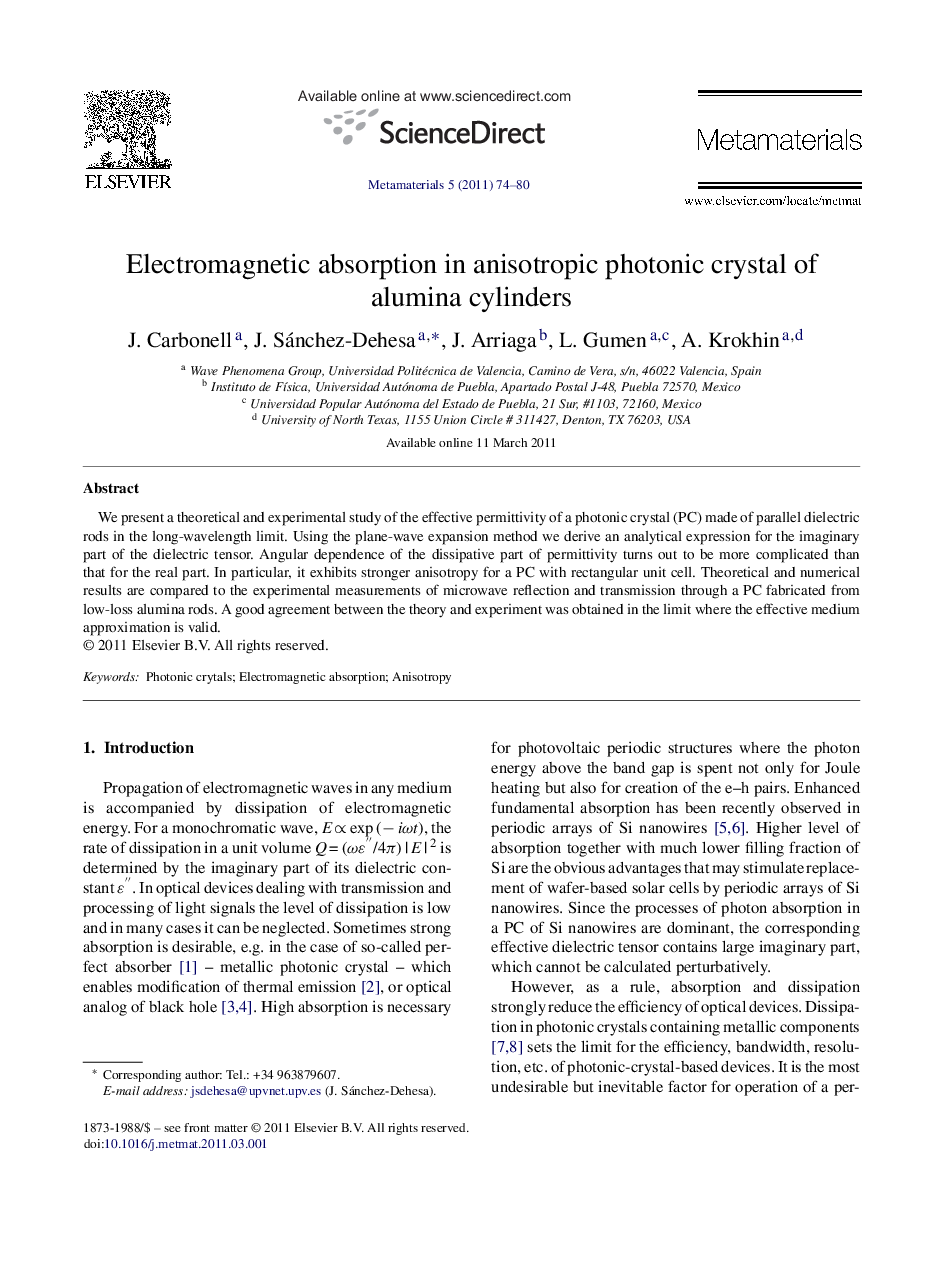| Article ID | Journal | Published Year | Pages | File Type |
|---|---|---|---|---|
| 1532809 | Metamaterials | 2011 | 7 Pages |
We present a theoretical and experimental study of the effective permittivity of a photonic crystal (PC) made of parallel dielectric rods in the long-wavelength limit. Using the plane-wave expansion method we derive an analytical expression for the imaginary part of the dielectric tensor. Angular dependence of the dissipative part of permittivity turns out to be more complicated than that for the real part. In particular, it exhibits stronger anisotropy for a PC with rectangular unit cell. Theoretical and numerical results are compared to the experimental measurements of microwave reflection and transmission through a PC fabricated from low-loss alumina rods. A good agreement between the theory and experiment was obtained in the limit where the effective medium approximation is valid.
Research highlights► Energy absorption by non-isotropic photonic crystals is studied at large wavelengths. ► The imaginary part of the dielectric function is obtained for the two polarizations. ► Magnetic field parallel to the cylinder axis gives anisotropic dielectric function. ► The case in which the Electric field is parallel (E-modes) the anisotropy disappear. ► Directions of maximum propagation (low loss) are selected in non-isotropic lattices.
